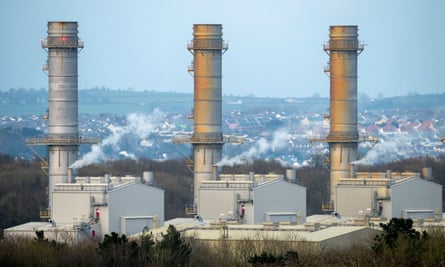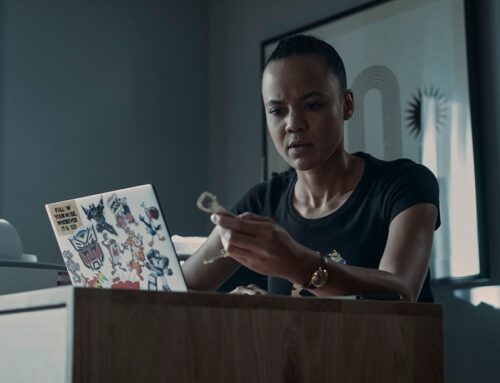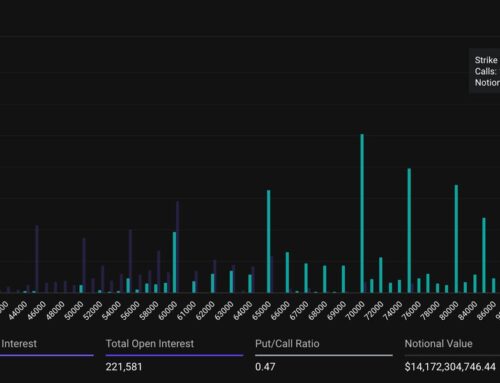The man in charge of Labour’s green energy dream: ‘It’s at the limit of what’s achievable’
September 30, 2024
The dense latticework of Great Britain’s electricity grid looms above the control-room floor from giant digital screens that show every pulse of the country’s power system.
From this unassuming office block in the Berkshire countryside, home to National Grid’s control centre, the UK’s shift away from fossil fuels has been monitored for more than 30 years.
The electricity system operator is transforming too. The company responsible for keeping Britain’s lights on has broken away from the energy conglomerate National Grid – and from Tuesday 1 October will be known as the National Energy System Operator (Neso), a publicly owned company with a mandate to deliver the government’s green energy agenda.
If the man tasked with turning energy secretary Ed Miliband’s dream of a clean power system by 2030 into a reality has any qualms about the scale of the challenge, he is not showing it. Standing in the Wokingham control room, Fintan Slye scans the screens: power plants are firing, turbines are spinning, and electricity is flowing through Britain’s subsea cables.
A small corner of one screen shows Britain’s last remaining coal plant, Ratcliffe-on-Soar in Nottinghamshire, quietly generating a tiny fraction of the grid’s electricity. “We won’t see that for long,” Slye says. On Monday the power station shut down for good.
Slye has borne responsibility for running Britain’s power grids since he took up the role of executive director of the electricity system operator in 2018 from the equivalent role in his native Ireland. He still misses being near the sea in Dublin, he says. But the chance to steer Britain to a low-carbon future will take priority for now.
The first task facing Neso will be setting a plan to decarbonise Britain’s electricity. In its first weeks in power, the government charged Slye and his team with drawing up the roadmap that will take Britain to an era of clean power by 2030, including the difficult changes that will be required to the UK’s planning and regulation regimes.
This plan will be used to inform a wider strategy for Britain’s creaking energy infrastructure as part of an effort to break down the fragmented thinking that has hindered progress to date, and chart a holistic future for British energy. For the first time, the system operator will be co-creating the landscape it controls.
This is “absolutely” the biggest challenge facing the new organisation, Slye says. “We have a new government coming in with a really clear mission around what it wants to achieve in energy. It was one of the main planks of their election manifesto, and it’s one of their key missions now that they are in power. But it is undoubtedly hugely ambitious to get to clean power by 2030. It requires not only for us to do everything that we can do quicker, but also very, very differently as well.”

Many within the industry would more readily describe the task as unachievable. If Slye is to meet this challenge, in the timescale set by the government, it will require an unprecedented effort, they say. Slye admits that there is a “huge degree of scepticism”, which has already led many to believe that the plans are “fantastical, undoable”. But he is adamant that they can be delivered.
“Is it at the outer limit of what’s achievable? Yes. But if you’re prepared to do things differently and to take difficult decisions early on, then yes, absolutely it is doable,” he says.
“That would include, in all likelihood, things like a complete reform of the planning and consenting regime, a streamlining of the regulatory approval process, changes to the grid connections process …” The list goes on.
“So we’re not saying that the target is achievable with the current energy industry processes and systems and ways of working. In fact, it’s not achievable in those circumstances. But if you can make the required changes, then it can be delivered,” Slye says.
When he moved to Britain in 2018, gas was the single largest source of electricity in the UK, at nearly 40% of all power generation. Five years on, it still makes up almost a third of the total. But in the five years ahead, Slye will need to relegate it to a peripheral role.
The power system will need to be clean, of course, but it must also reliably keep the lights on while remaining affordable and resilient to shocks. The forthcoming roadmap will probably set out two or three routes which offer different strategies, with different costs and challenges, to reach the same destination. Ultimately, it will be up to government ministers to decide which path to take.
One thing these routes will not deliver is the “zero carbon electricity system” promised by the Labour party before the election – at least, not all of the time. Since coming to power, ministers have made subtle tweaks to the rhetoric, choosing to talk about “clean power” by the end of the decade. This is arguably a more flexible target.
“There’s no established definition of clean power,” says Slye. “So what does it realistically mean? One of the key pieces of work from the Committee on Climate Change found that the cost [of decarbonisation] really begins to escalate when you reach those last percentage points towards 100% clean power.
“So at the moment, the working definition that we’re using for this analysis is to reach 95% clean power. That means that, by 2030, 95% of the generation in Great Britain over the period of a year will be from clean power sources. And that means that the remaining 5% will come from unabated gas. That’s our definition.”
There will continue to be “a significant amount” of gas power plants in reserve for the cold, dull, windless weeks of winter, but they will run for only limited periods, Slye says. Conversely, there will be days when Great Britain generates far more electricity from renewable energy sources than it can use or store, so there are likely to be greater exports to neighbouring countries.
after newsletter promotion
But achieving a power grid that is 95% decarbonised by 2030 will come with enormous challenges – specifically, the “creaking” legacy systems and regulations that have been outpaced by the growth of the green energy industry. The owners of facilities such as grid-scale batteries have been vocal in their criticism of the operator, accusing the control room of continuing to favour old power plants when newer, cleaner technologies could do the job.
Britain’s power grid was built around its coalfields, with coal power stations linked to homes via a vast transmission spine and regional distribution networks. The shift from fossil fuel power to intermittent renewable energy has made it more difficult to maintain the stability of the grid, requiring the system operator to trial new measures, including paying heavy energy users to increase or reduce their consumption at certain times.
Today, renewables make up just over half of Britain’s electricity, but that is due to climb to around two-thirds by 2030 as more windfarms and solar panels plug into the grid.
“There are issues,” agrees Slye. “But it’s not a bias issue, or a culture issue. The reality is that the scale of change that has happened in Great Britain’s generation portfolio means the IT systems have not kept up with it. The systems that we have today were designed to dispatch a small number of really large gas or coal plants to a far, far larger number of smaller-scale energy sources. We’ve shifted from needing to send five instructions an hour to 500 instructions an hour. It’s creaking.”
Requests from new smaller-scale energy projects for connection to the grid are handled on a first-come first-served basis, leading the process to become clogged with “zombie projects” that are not ready to move forward but have a spot in the queue ahead of those that could.
“These legacy processes were fine when there were only two or three generators connecting to the grid every year, but at the moment the queue is over 700 gigawatts heading to 800 gigawatts,” Slye says. “We wrote to everyone who had been hoping to connect to the transmission grid to say that they need to be ready to connect within two years – this prompted half of the ‘zombie projects’ to admit that they are not ready and to take a step back. … But we need the new reforms which are coming through.”
While reforms and regulations are put in place, Neso is consulting with the market, regulators and the government on interim changes which may ease frustrations.
“There’s an old perception that system operators exist in their ivory tower, in a command-and-control type role,” says Slye. “We’ve already begun the journey away from this, and we’re becoming more open. All of the things that we’re talking about are much bigger than what we can solve ourselves.
CV
Age 54
Family Married to Jenny with two children.
Education Degree in engineering; master’s in engineering science; diploma in legal studies; diploma in European law; master’s in business administration.
Pay £273,000
Last holiday Cornwall (Padstow) at the end of August.
Biggest regret Not travelling to the World Cup in 1994 to see Ireland beat Italy.
Best advice he’s been given “It’s all about people. Also, don’t swing at every pitch.”
Phrase he overuses “Are we just drinking our own Kool-Aid?”
How he relaxes “Music. I bought a turntable and I’m recreating the vinyl collection I had in my youth, and I’m trying to learn guitar.”
Search
RECENT PRESS RELEASES
Related Post




